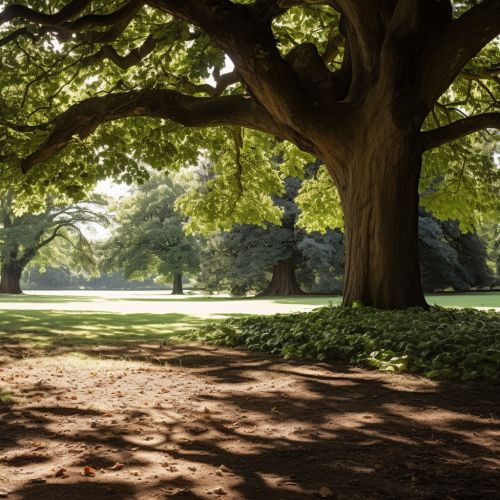Shade
Definition and Overview
Shade is a term used to describe the blocking of sunlight. In the context of meteorology, it is the reduction of direct sunlight caused by the obstruction of the sun by an object, such as a tree or building. This phenomenon is commonly observed in nature and is an essential aspect of the environment, influencing temperature, humidity, and the growth of organisms more on meteorology.
Physical Properties
Shade is characterized by lower levels of direct sunlight, leading to a decrease in temperature compared to areas exposed to direct sunlight. This is due to the fact that the object causing the shade absorbs or reflects the sunlight, preventing it from reaching the shaded area. The temperature difference between shaded and sunlit areas can vary significantly depending on factors such as the size and type of the object causing the shade, the angle of the sun, and the intensity of the sunlight more on sunlight.
Biological Importance
Shade plays a crucial role in the survival and growth of many organisms. For instance, many plants require shade to protect them from the intense heat and radiation of direct sunlight. Some plants, known as shade-tolerant plants, have adapted to grow in low light conditions and can thrive in heavily shaded areas. On the other hand, shade-intolerant plants require more sunlight and may struggle to grow in shaded areas more on plant adaptation.
Cultural Significance
In many cultures, shade has symbolic and practical significance. It is often associated with protection, comfort, and relief from the harshness of the sun. In architecture, the creation of shade is an important consideration in the design of buildings and outdoor spaces. This is achieved through the use of awnings, pergolas, and other architectural elements. In addition, shade trees are often planted in urban areas to provide relief from the heat and improve the aesthetic appeal of the environment more on architecture.
Measurement and Quantification
The amount of shade in a given area can be quantified using various methods. One common method is the use of a solar pathfinder, a device that measures the amount of sunlight that reaches a specific location at different times of the day and year. This information can be used to determine the optimal placement of solar panels, among other applications more on solar energy.
Impact on Climate
Shade can significantly impact local and global climates. In urban areas, the shade provided by buildings and trees can help reduce the urban heat island effect, a phenomenon where urban areas are significantly warmer than surrounding rural areas. On a global scale, the shade provided by clouds plays a crucial role in regulating the Earth's temperature by reflecting sunlight back into space more on climate change.
See Also


